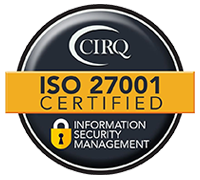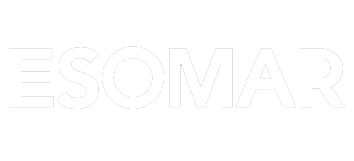Think Outside the Box: Creative Ideas for Better Qualitative Research
Focus groups and other qualitative research techniques are often used to generate ideas for new product development. In spite of this frequent application, it is notoriously difficult to bring eight, ten or even twelve strangers together for a discussion. Add to that the need to get them to open up and “be creative” about your brand, messaging or products and services, and you have a real challenge.
Great recruiting and great moderating are two of the most critical elements for this process to work. Great recruiting brings you open, honest, articulate individuals who have imagination and a sense of play. Great moderators create an open and accepting environment where participants can say whatever is on their minds. Once you have those, you are halfway home.
The next critical element is to have some creative ways to get people talking. Here are some ideas to break the ice and get people thinking outside their comfort zone – and generating great ideas for you.
- Change Your Perspective: Think about the user of your product and how they see the world when they are using it. Developing a dog product? Get participants on their hands and knees so they can experience the world from their dog’s point of view. Looking into baby products? Perhaps asking your participants to imagine sitting in their baby’s stroller or car seat would give them a new perspective. (Disney asks their merchandising managers to crawl through their stores on their hands and knees to get a kid’s perspective. If it works for Disney, it might work for you!).
- Get Comfortable: The traditional focus group setup of respondents around the table, and the moderator at the head, may not be optimal for all groups. Try a living room setup to create a more casual and open environment. Alternatively, skip the facility all together and hold the focus group in a congenial bar or restaurant. If you’re researching tweens, how about holding your discussion at the food court in a local mall? Or how about discussing baby products at a baby shower? You may have some technical challenges, but letting people stay in their natural environment might get you richer insights.
- Take Some Time: Most people need more than an hour and a half or two hours to feel comfortable with a group of people they have never met before. And, most people need more than that to immerse themselves in a topic enough to generate new and exciting ideas. Many researchers believe that longer focus groups (four to eight hours, with appropriate breaks) are better for generating creativity, especially in new product development.
- Put on a Play: Role-playing around a situation can reveal many interesting insights about the customer’s experience. Ask participants to role-play explaining to a friend how they use your product – or explaining to their spouse why they chose your brand (even though it is more expensive than the competition). Be sure that everyone gets a chance to play roles on both sides of the discussion to get as many perspectives as you can.
- Picture This: Many people relate better to pictures than words, so use pictures to generate ideas. You can produce pictures of different kinds of people (in different settings) and ask respondents whether the people in each picture would be your brand’s customers, and why. You can give participants a stack of magazines and ask them to create a collage of images that they associate with your brand or product. You can even ask them to draw pictures on flip charts or white boards, as long as you make it clear that artistic talent is not necessary.
- Bring Props: When you recruit respondents, ask them to bring something with them to open the discussion. You might ask them to bring something that they associate with your brand. If you are working on children’s clothing, ask them to bring their favorite outfit so they can explain what makes it their favorite. If you are designing pet products, have them bring a picture of their pet(s). (Everyone loves to talk about their pets, and different breeds will need different toys, so it will help to understand everyone’s context.)

- Get Sticky: Sticky notes and markers are great tools for generating discussion. You can ask respondents to brainstorm ideas, make lists (challenges, strengths and weaknesses, do’s and don’ts, etc.), hypothesize uses and many more. Then, once the ideas have been generated, you can stick them on a wall, a white board, a flip chart or another surface. Once they are posted, they can then be evaluated and prioritized by moving the sticky note around. You can even use different color sticky notes to denote different types of ideas or categories.
- Throw A Party: When you need to differentiate similar products by exploring and defining their brand personalities, ask respondents to imagine that they are “going to a party at the ________ house.” For example, local hospitals are pretty similar in their benefits and features: they all have similar emergency rooms, x-rays and doctors. So how are they different? We asked participants to imagine the hospital was throwing a party at their house. We asked them to describe the party they imagined in detail (e.g., who was there, how they were dressed, what food was offered, how was it served, what music was playing). The resulting discussion revealed these three local hospitals were indeed very different in terms of their brand personas.
- Flip Your Questions: Sometimes, we just need to think of things differently in order to loosen up great ideas. So instead of asking the usual questions (e.g., what kind of people would use this product?) flip it: What kind of people would definitely NOT use this product? Asking negatively based questions can easily lead participants to thinking about the opposite. And the more outrageous the question, the better. For example: “You’d have to be crazy to use this product to _________.” or “No one in their right mind would buy this product to _______________.” (Note: Fill-in-the-blank questions are good for generating interesting ideas once the group is warmed up and comfortable with each other.)
- Orient Your Respondents: Two of the biggest hurdles for using focus groups to generate new ideas are respondent’s lack of comfort and familiarity with each other and with the specific idea-generating techniques being used (which can seem strange to the uninitiated). In order to overcome this obstacle, bring your group together twice. First, bring them together to get to know each other, to learn about the problem being addressed, and to become familiar with the creativity techniques you will be using. Then, convene the group again a few days later to conduct the focus group. In this way, you let your respondents overcome their shyness, and get them thinking about and looking forward to participating in the group.
Qualitative research is an excellent tool for generating innovative and creative marketing and new products and services. Using unique and creative question approaches and brainstorming activities can help even the most reserved respondent open up and share their deepest insights. Introducing an element of fun and “out of the box” thinking can increase the likelihood of generating innovative and exciting insights and ideas.
What other creative techniques have you used to get respondents to share their insights? Leave a comment below!














